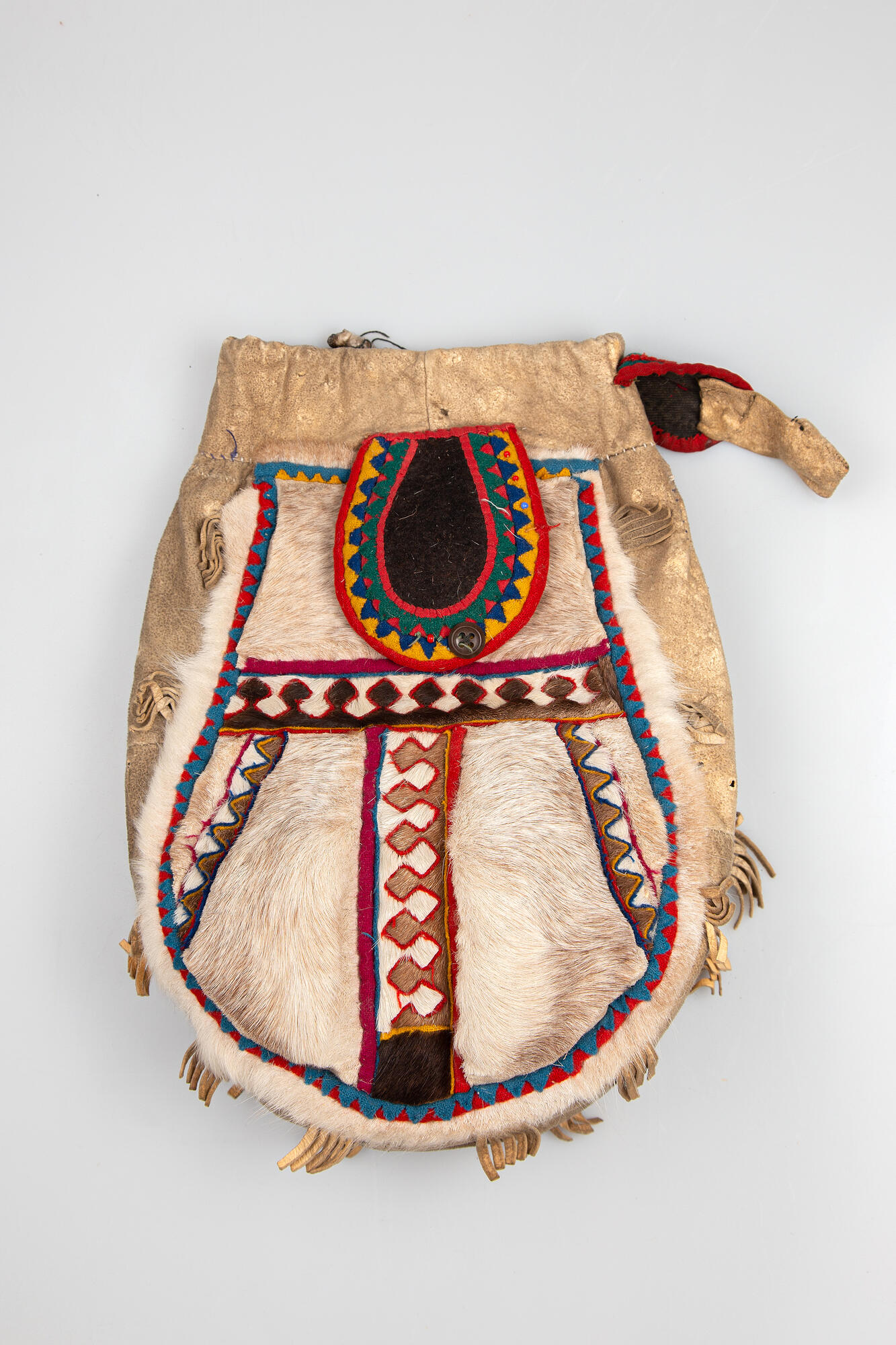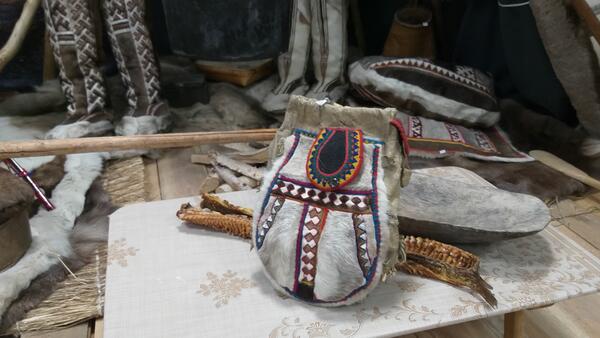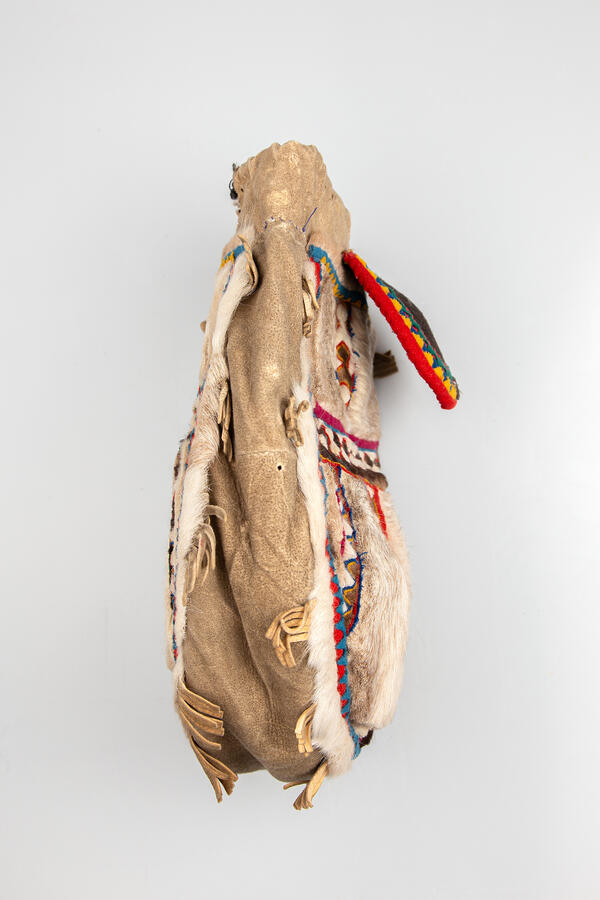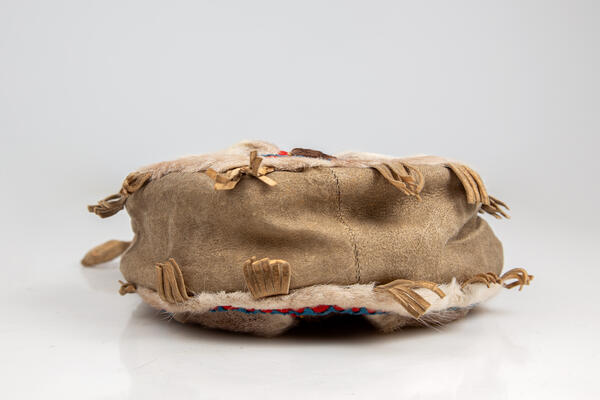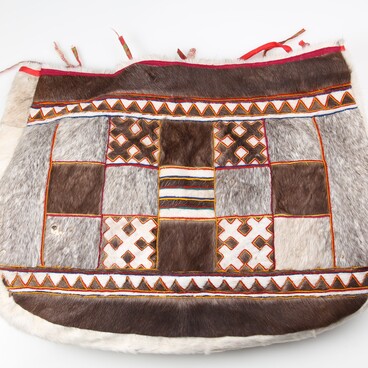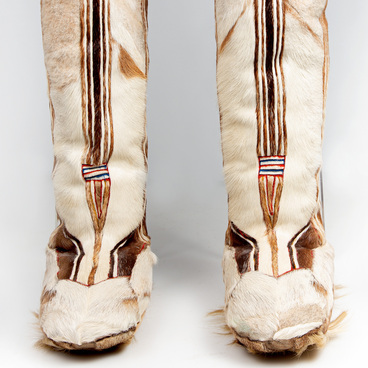Soft bags and bags made of reindeer skin are among the most popular attributes of the nomadic Nenets. The bags vary in size and are used to store and transport various household items: clothes, shoes, underwear, and tools. A tushan is a small women’s bag for sewing accessories. Since olden times, a Nenets woman made clothes for the whole family, as well as the walls of a chum tent. A tushan is a symbol of traditions that have been passed down from mother to daughter for many centuries.
A girl receives her first handbag for needlework at the age of seven and keeps it all her life as a talisman. In ancient times, the northern people endowed every detail of the bag with meaning: one side of it meant day, and the other side meant night. They sewed tushan bags of suede or skins from deer foreheads, and the places of the eye sockets were embroidered with cloth piping.
Handbags were decorated with mosaics, embroidery and appliqué. The Nenets ornament is “patterned written language”, which shows the connection between a deer, a chum and a person. This motif was also performed on the tushan from the collection of the Purovsky Museum. The chum is reflected in the eyes of a deer, and a person sees a deer from the chum. The white part of the bag is snow, the patterns are people, the triangles are chum tents. The pattern on the deer’s forehead indicates that it is the most important being in the tundra. A border of white fur is the horizon, and cloth strips are roads and paths, traces of people, deer and animals.
A tushan handbag symbolized the dignity of a woman and her work — just like a belt with a knife, working tools and amulets meant the same for a man. Women put needle cases, thimbles, tendon threads, shreds of cloth, beads and rings for decoration into the tushan. A ceremonial bag with pieces of fur, dried entrails and bones of an otter was attached to the tushan.
A young wife takes her tushan with her when she moves into her husband’s house. If the groom is poor, cannot pay bridewealth and steals her against the will of her parents, she gets no dowry — no deer, no clothes, and no shoes. Such a bride is called “tushchanli minena”, which means “bringing only her women’s handbag to the groom’s family.”
A girl receives her first handbag for needlework at the age of seven and keeps it all her life as a talisman. In ancient times, the northern people endowed every detail of the bag with meaning: one side of it meant day, and the other side meant night. They sewed tushan bags of suede or skins from deer foreheads, and the places of the eye sockets were embroidered with cloth piping.
Handbags were decorated with mosaics, embroidery and appliqué. The Nenets ornament is “patterned written language”, which shows the connection between a deer, a chum and a person. This motif was also performed on the tushan from the collection of the Purovsky Museum. The chum is reflected in the eyes of a deer, and a person sees a deer from the chum. The white part of the bag is snow, the patterns are people, the triangles are chum tents. The pattern on the deer’s forehead indicates that it is the most important being in the tundra. A border of white fur is the horizon, and cloth strips are roads and paths, traces of people, deer and animals.
A tushan handbag symbolized the dignity of a woman and her work — just like a belt with a knife, working tools and amulets meant the same for a man. Women put needle cases, thimbles, tendon threads, shreds of cloth, beads and rings for decoration into the tushan. A ceremonial bag with pieces of fur, dried entrails and bones of an otter was attached to the tushan.
A tushan handbag has its own owner or spirit — it is a spider. It tirelessly weaves its web, just as a woman mends and sews clothes for her family every day. If a woman killed a spider or tore its web, she could lose all her sewing supplies and be left “without hands.” In Nenets, the spider is called “nimi kata” — “grandmother of needles.”
A young wife takes her tushan with her when she moves into her husband’s house. If the groom is poor, cannot pay bridewealth and steals her against the will of her parents, she gets no dowry — no deer, no clothes, and no shoes. Such a bride is called “tushchanli minena”, which means “bringing only her women’s handbag to the groom’s family.”
